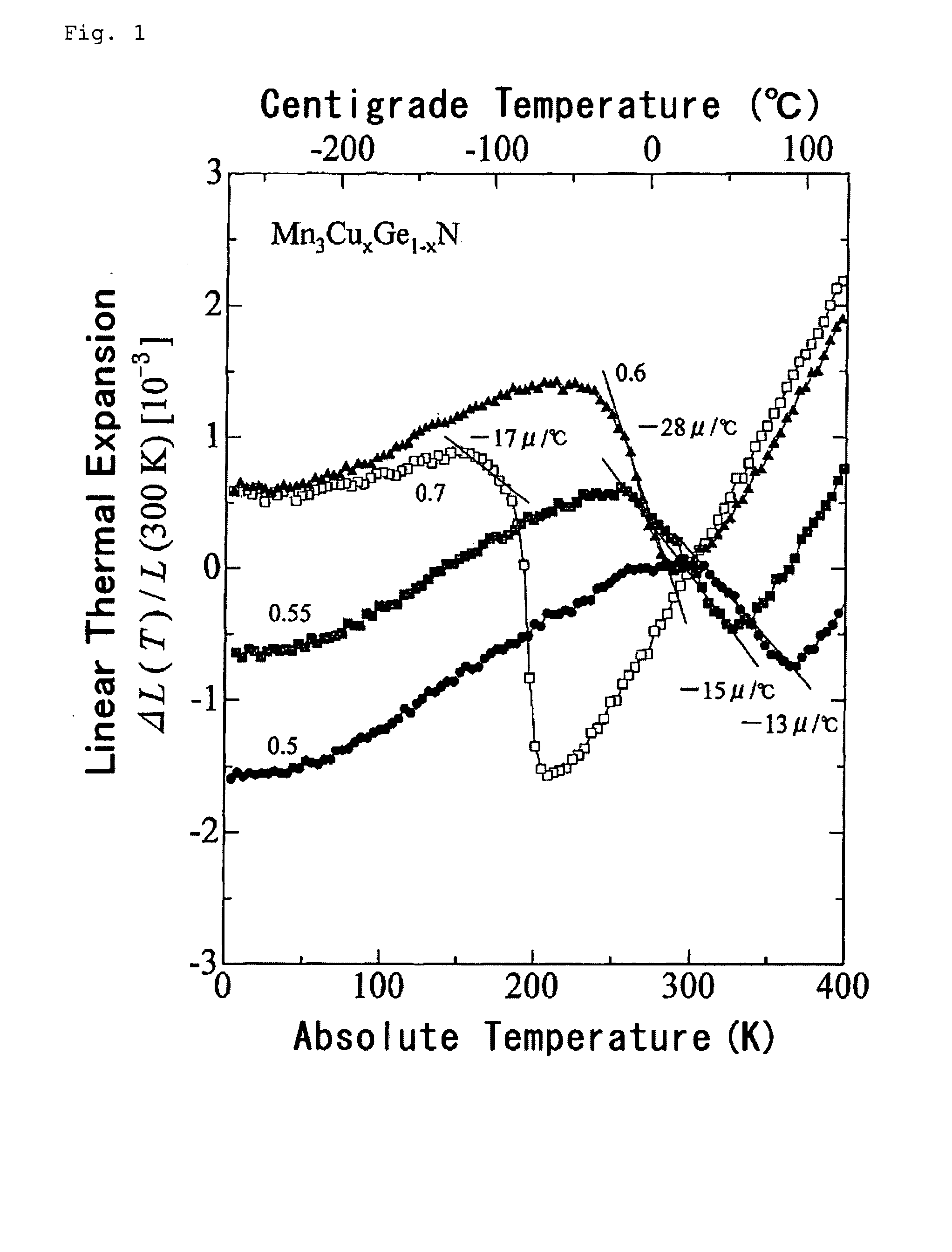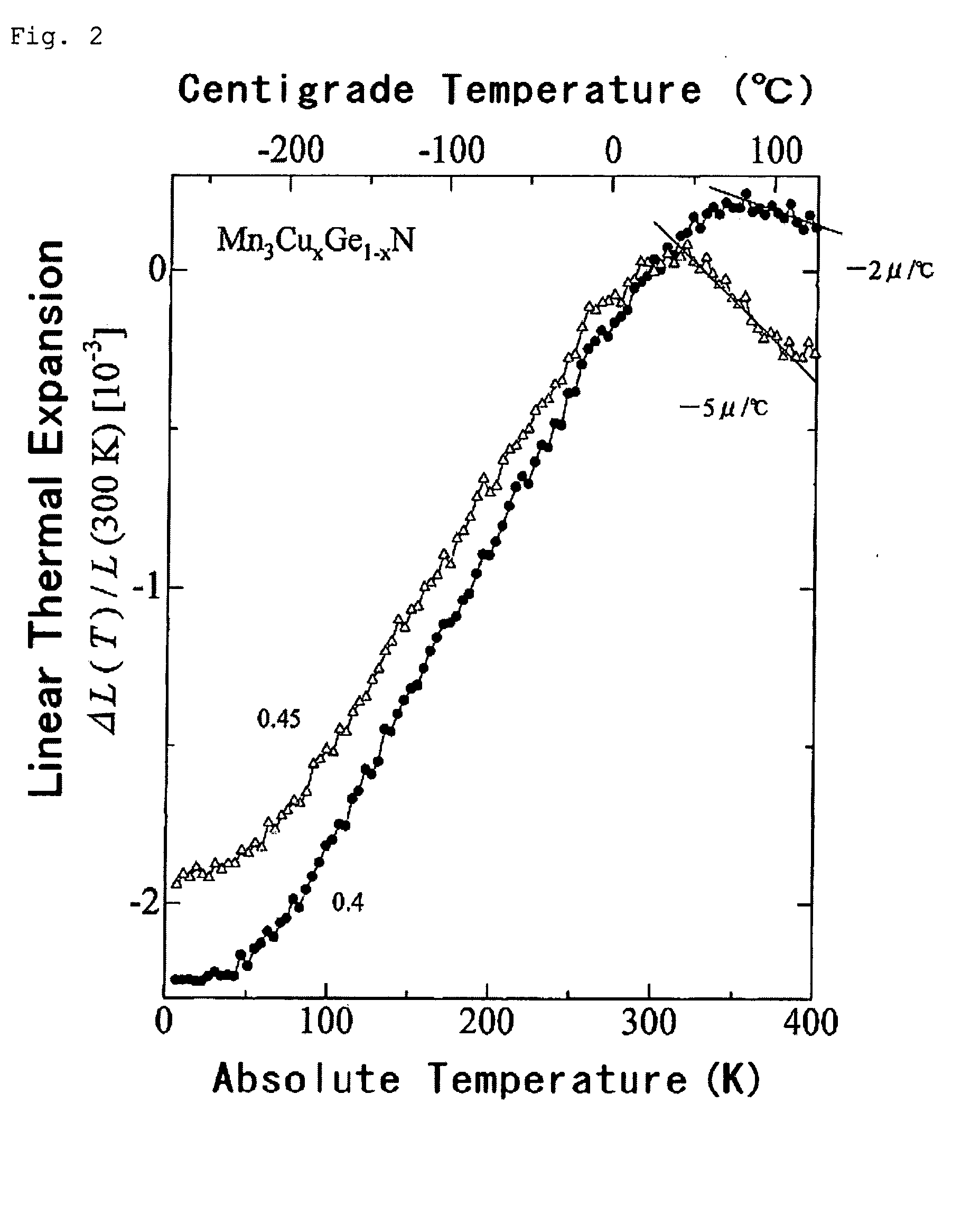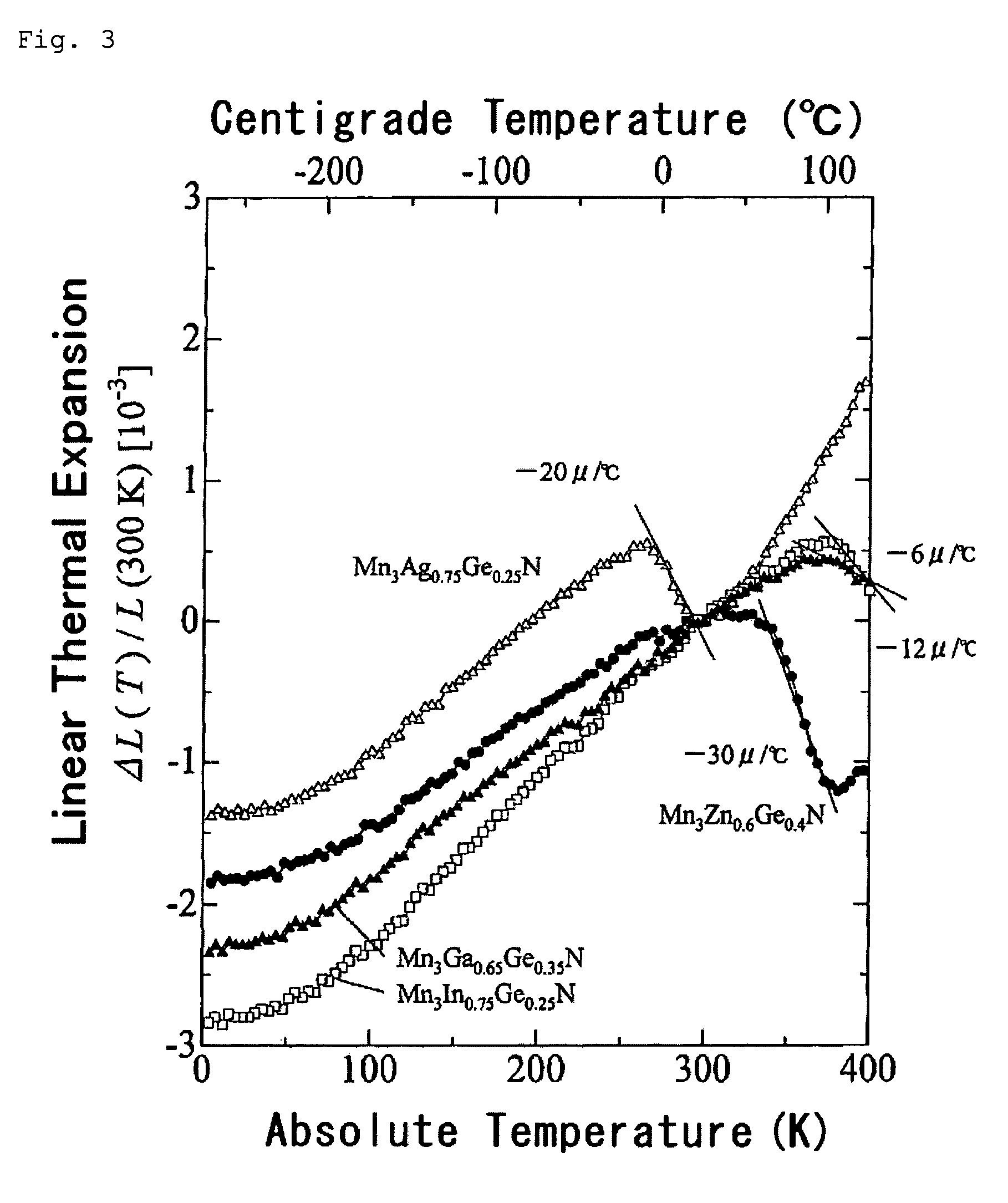Thermal Expansion Inhibitor, Zero Thermal Expansion Material, Negative Thermal Expansion Material, Method for Inhibiting Thermal Expansion, and Method for Producing Thermal Expansion Inhibitor
a technology of negative thermal expansion and thermal expansion inhibitor, which is applied in the direction of silicon compounds, instruments, and other chemical processes, can solve the problems of not being a satisfactory thermal expansion inhibitor, the substance cannot be put in practical use as an industrial thermal expansion inhibitor, and the part to be used in the device that is exposed to temperature change, etc., to achieve accurate control, break the magnetic transition temperature range, and keep the effect of negative thermal expansion
- Summary
- Abstract
- Description
- Claims
- Application Information
AI Technical Summary
Benefits of technology
Problems solved by technology
Method used
Image
Examples
examples
[0092]The invention is described more concretely with reference to the following Examples. In the following Examples, the materials used, amount and ratio thereof, the details of the treatment and the treatment process may be suitably modified or changed not overstepping the gist and the scope of the invention. Accordingly, the invention should not be limited to the Examples mentioned below.
(1) Production of Thermal Expansion Inhibitor:
[0093]Mn3A1N and Mn3A2N (where A1 and A2 are any of Mn, Co, Ni, Cu, Zn, Ga, Ge, Pd, Ag, In or Sn; the same shall apply hereinafter) were prepared by mixing and stirring Mn2N and A in a ratio by mol of Mn2N to A, Mn / A1 or A2=3 / 1, then by putting and sealing up the resulting mixture in vacuum (about 10−3 torr) in a quartz tube, and by heating and sintering it therein at 500 to 770° C. for 60 to 70 hours. However, Mn3GaN was prepared, starting from Mn2N and GaN, by heating and sintering them in nitrogen gas of 1 atm at 760° C. for 60 hours. Mn4N was prep...
PUM
| Property | Measurement | Unit |
|---|---|---|
| thermal expansion | aaaaa | aaaaa |
| negative thermal expansion | aaaaa | aaaaa |
| lattice thermal contraction | aaaaa | aaaaa |
Abstract
Description
Claims
Application Information
 Login to View More
Login to View More - R&D
- Intellectual Property
- Life Sciences
- Materials
- Tech Scout
- Unparalleled Data Quality
- Higher Quality Content
- 60% Fewer Hallucinations
Browse by: Latest US Patents, China's latest patents, Technical Efficacy Thesaurus, Application Domain, Technology Topic, Popular Technical Reports.
© 2025 PatSnap. All rights reserved.Legal|Privacy policy|Modern Slavery Act Transparency Statement|Sitemap|About US| Contact US: help@patsnap.com



